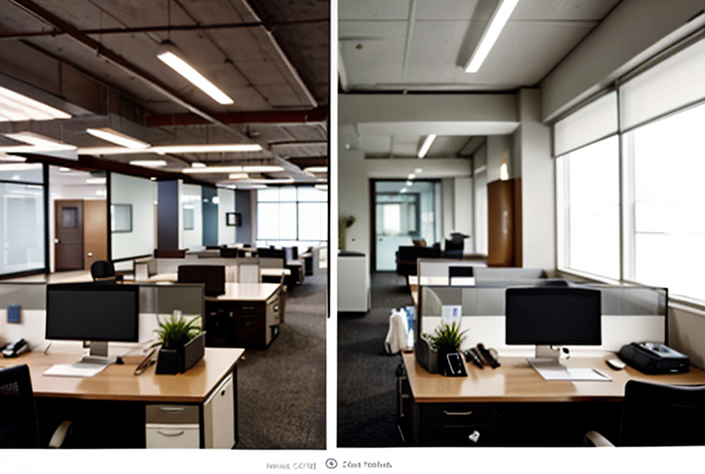Does Human Resources Help Employees?
Human Resources, or HR, hasreally changed. It began mainly as a paper-pushing job. People filed paperwork and managed payroll. This was important, but it was not enough.
Are You a Good Fit for This Job?
From the 1900s, companies started to see humans as resources. In the early days, management only cared about profits. Workers were just cogs in a machine. They worked long hours with little support.
As years passed, the role of HR began to shift. During the 1960s and 1970s, there was a major social change. People started fighting for rights. Labor unions grew. They pushed companies to value workers more.
HR started listening. They realized workers need more than a paycheck. HR teams began to speak for employees. They worked on improving conditions and benefits.
- 1970s: Equal Employment Opportunity laws emerged.
- 1980s: Training and development became a focus.
- 1990s: Companies embraced diversity.
- 2000s: Technology entered the scene.
In every decade, HR found new roles. They created programs to help employees grow. Health benefits expanded. Retirement plans became a standard.
Fast forward to today. HR is now crucial in every business. They help create a positive workplace culture. Employees are more than resources; they are valuable team members.
To better understand the hiring process and how long it typically takes for HR to fill positions, you can explore more about the timeframes involved in recruitment.
Learn about the hiring durations in HR.
Data shows a happy employee is often more productive. For instance, companies with strong HR support report 21% more profits. They succeed more compared to those without these systems.
All these changes show HR’s evolution. It no longer merely manages paperwork. Now, it supports employees by advocating for their needs.
These inklings of transformation highlight a powerful shift. They symbolize a broader understanding of work. A healthy environment fosters growth for both business and employee.
HR as Advocates: Listening to Employee Voices

Human Resources can powerfully advocate for workers. They play a key role in creating a workplace where everyone feels heard. At XYZ Corporation, HR gathered feedback to improve work-life balance. Employees felt stressed, so HR set up listening sessions. Feedback from these sessions led to flexible hours. Workers appreciated having choices. This initiative increased satisfaction within teams.
At ABC Company, HR implemented an anonymous survey. It enabled employees to share concerns without fear. Results showed that communication was lacking. HR developed new channels for staff to voice their ideas. They organized regular town hall meetings. Employees felt more engaged in decision-making.
- In each meeting, HR encouraged open dialogue.
- Staff shared suggestions for improvement.
- HR acted on feedback to implement changes.
- This boosted morale and productivity.
Effective HR departments listen. Their role as advocates proves vital in today’s workplace. For instance, at DEF Enterprises, HR ran focus groups to address diversity. Employees voiced the need for more representation. HR responded with actionable goals. They committed to hiring a more diverse workforce.
At 123 Industries, HR tackled employee wellness. They noticed increased stress levels among staff. Surveys revealed concerns about mental health resources. HR initiated a well-being program with online counseling. Employees expressed gratitude for the support. This fostered a safer work culture.
However, not all initiatives succeed. The meaning of listening can be lost. Sometimes, employers may ignore feedback. When this happens, trust erodes. To counter this risk, HR must act transparently. Keep the promise to listen actively. Otherwise, employees may feel they are just voices lost in space.
In turn, this effort linked back to retention rates. Workers felt valued and recognized for their unique backgrounds. Advocacy from HR provides real change. It creates an environment where employees thrive. Strong HR practices lead to happier workspaces!
Support Structures: The Role of HR in Employee Well-Being
HR plays a big role in employee well-being. They create important support structures. These help workers feel valued. One key initiative is the mental health program. Mental health matters a lot today.
Work From Anywhere Opportunities:
Studies show that 1 in 5 people experience mental health issues each year. Companies with good mental health support see a 30% reduction in absenteeism. HR helps remove the stigma around seeking help. This can boost morale and productivity.
HR often offers therapy options and wellness workshops. They want employees to feel safe to talk about their struggles. Employees reports feeling more supported when these options are present. Flexibility can also enhance well-being.
- Flexible work hours
- Remote work options
- Time off for personal reasons
These choices lead to higher job satisfaction. A study found that 75% of workers prefer flexible schedules. Employees feel more in control of their work-life balance.
Career development is another strong focus for HR. Providing training and skill-building helps workers excel. Effective career paths can reduce turnover by up to 50%. Recognizing employee potential is crucial.
HR can offer mentoring programs. Mentoring connects less experienced employees with veterans. This connection enriches the workplace experience.
HR also tracks employee satisfaction through surveys. These give insight into what the workforce wants. Surveys can identify gaps in support structures. They can helps create better programs.
Another way HR enhances well-being is through rewards and recognition. Publicly recognizing accomplishments boosts confidence. It fosters an uplifting culture among teams.
Engagement in work creates community. According to recent findings, employees engaged in their roles show higher productivity. They tend to stay longer with the company.
But HR faces criticism as well. Some employees see HR as another rule maker. Balancing roles can sometimes be quite tricky. Yet, their main goal is to uplift the workforce.
This makes HR powerful agents of change.
Well-designed support systems improve overall employee happiness. The commitment to enhancing well-being pays dividends for the company. Happy workers lead to lasting success.
Challenges and Critiques: HR’s Dual Role

Human Resources has a tricky job. They often walk a fine line. On one side, they must meet organizational goals. On the other, they look after employees’ needs. This dual role creates tension.
Employees sometimes view HR with suspicion. Many see them as enforcers of rules. This can lead to distrust. HR’s policies can feel like barriers instead of support. However, HR can be advocates too.
- They communicate employee feedback to management.
- They help resolve conflicts at work.
- HR designs programs to boost morale.
The challenge lies in balancing these roles. Whenever HR pushes for changes, they risk alienating people. Sometimes they have to enforce unpopular decisions. Feeling caught between two worlds is common for HR.
Common critiques point to their lack of transparency. Employees may feel unheard or dismissed. HR can sometimes seem disconnected from everyday issues. They might focus more on policies than people. This creates a gap.
Moreover, HR has to align with business strategies. They can’t just be friendly chatterboxes. They must ensure compliance and productivity. They often face stress from both sides. This can lead to burnout.
HR should be a bridge, not a wall. The best HR teams listen and adapt. They adjust their strategies based on employee input. Keeping that strong balance is crucial. Bridging the gap creates a healthier workplace.
In the end, HR must grow. They can no longer be just rule enforcers. They must evolve into advocates. This might take time, and that’s okay. But the future of HR depends on this shift.
The Future of HR: Innovations and Next Steps
Human Resources stands at the cusp of great change. Technology is becoming more important every day. Artificial intelligence improves hiring processes. It helps find candidates that fit well. Data analytics reveal employee trends and needs.
The integration of tech seems promising. Companies can track employee engagement better. Workers could receive support tailored to them. This personal approach is crucial for success. It cultivates a happier, more productive workforce.
- Diversity and inclusion will take center stage.
- Organizations will strive for equitable practices.
- Hiring diverse employees will benefit all.
Workers will bring fresh ideas to the table. A blend of backgrounds fosters innovation. HR will also focus on creating safe spaces. Those spaces will encourage every voice to be heard.
Remote work is here to stay. Companies must adapt to flexible arrangements. It’s a way of enhancing work-life balance. This flexibility can inspire loyalty.
More emphasis on mental health is necessary. Resources to support mental well-being exist. HR can implement programs on stress management. Employees need support in coping with challenges.
HR must also evolve into a strategic partner. Connecting business goals with employee needs is key. This linkage can drive success for all. Yet, there’re challenges in balancing both sides.
HR’s Bright Future
HR’s evolving role paints an optimistic picture. Empowering employees will strengthen organizations. As technology grows, it opens new avenues. Staying attuned to employee needs is vital.
Communication must remain clear and open. Feedback will shape the workplace of the future. Happy workers lead to strong business outcomes. Organizations must remember: the workforce is its most valuable asset. So a supportive culture paves the way for success!







